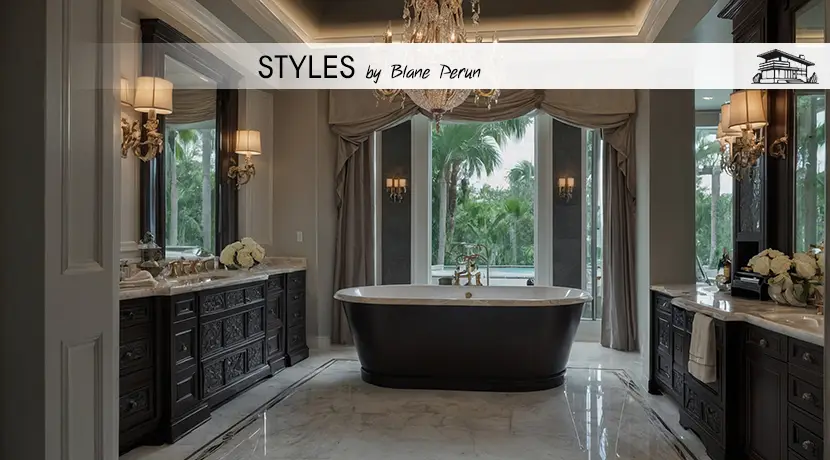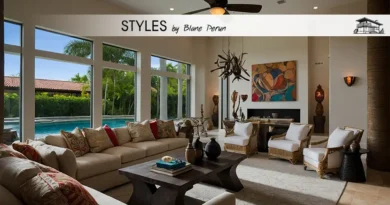Italian Style
The Essence of Elegance: Unveiling the Charm of Italian Interior Design
When one thinks of Italian Interior Design, images of elegant, sophisticated spaces brimming with a harmonious blend of history and modernity often come to mind. This design ethos, deeply rooted in Italy’s rich cultural heritage, seamlessly integrates the grandeur of the Renaissance with contemporary trends, creating environments that are not only visually stunning but also incredibly functional. Italian design, characterized by its meticulous attention to detail, use of high-quality materials, and inherent sense of style, transcends mere aesthetics to evoke a feeling of luxury and comfort. In this exploration, we’ll delve into the unique elements that define Italian interior design, uncovering how this celebrated style can transform spaces into captivating works of art.

The Historical Influence on Modern Italian Design
Renaissance Revival in Contemporary Spaces
The Renaissance period, known for its revolutionary art, architecture, and design, profoundly influences modern Italian interior design. Designers often incorporate elements such as frescoes, intricate reliefs, and classical motifs into contemporary settings. This fusion creates a timeless ambiance that pays homage to Italy’s artistic legacy while catering to modern living standards. Utilizing materials like Carrara marble (Marmo di Carrara) and techniques like trompe-l’oeil, designers craft spaces that are both opulent and inviting.
The Baroque Touch in Modern Décor
Italian Baroque, with its emphasis on dramatic, over-the-top elements, continues to inspire interior designers. Modern interpretations of this style often involve bold contrasts, curvilinear forms, and elaborate ornamentation. Incorporating velvet upholstery, gilded mirrors, and ornate chandeliers into contemporary interiors creates a luxurious and dynamic environment that reflects the grandiosity of the Baroque era while maintaining a modern edge.
Innovation and Craftsmanship in Italian Design
The Role of Artisanal Craftsmanship
Italy’s rich tradition of craftsmanship plays a crucial role in its interior design. Artisans skilled in woodworking, glassblowing, and ceramics contribute to the unique character of Italian interiors. Furniture pieces and decor items, often handcrafted, are not only functional but also artistic expressions. Brands like Natuzzi and Poltrona Frau exemplify this blend of innovation and tradition, producing pieces that are both cutting-edge and deeply rooted in Italian craftsmanship.
Technological Integration in Design
In the realm of Italian Interior Design, the integration of technology with design aesthetics stands out. Smart homes, equipped with advanced systems for lighting, climate control, and security, are seamlessly blended with stylish interiors. This integration ensures that the functionality and comfort of living spaces are enhanced without compromising their beauty. Italian designers excel in creating environments where technology complements the aesthetic, ensuring a harmonious blend of form and function.
Sustainability and Italian Interior Design
Embracing Eco-friendly Materials
Sustainability has become a pivotal aspect of Italian Interior Design. Designers are increasingly turning to eco-friendly materials and practices to minimize environmental impact. Materials such as reclaimed wood, recycled glass, and non-toxic paints are becoming staples in Italian interiors. This commitment to sustainability not only reflects a global trend but also adds a layer of authenticity and respect for nature to Italian design.
Innovative Sustainable Practices
Beyond materials, Italian designers are innovating in sustainable practices, incorporating energy-efficient lighting, water-saving fixtures, and green roofing systems into their designs. These initiatives contribute to the creation of spaces that are not only aesthetically pleasing but also environmentally responsible. The integration of green spaces, both indoor and outdoor, further enhances this commitment to sustainability, offering a breath of fresh air in urban environments.
In conclusion, Italian Interior Design encompasses a rich tapestry of history, craftsmanship, innovation, and sustainability. It offers a glimpse into a world where the past and present coalesce, creating spaces that are both beautiful and functional. As we continue to explore and embrace this timeless style, we open our doors to a world of elegance, sophistication, and unparalleled design excellence.

FAQ Section
What distinguishes Italian Interior Design from other design styles?
Italian Interior Design is renowned for its seamless blend of historical elegance and contemporary innovation. It stands out for its emphasis on quality craftsmanship, luxurious materials, and a harmonious balance between aesthetic beauty and functional living. The incorporation of art, history, and modern technology also sets it apart, offering a unique, sophisticated experience in every space.
How does Italian Interior Design incorporate modern technology?
Modern Italian Interior Design integrates technology through smart home features, energy-efficient solutions, and advanced materials. Designers skillfully combine these technological elements with traditional aesthetics, ensuring that spaces are not only visually appealing but also highly functional, enhancing the comfort and convenience of everyday living.
Can Italian Interior Design be sustainable?
Absolutely, sustainability is increasingly becoming a core component of Italian Interior Design. Designers are focusing on eco-friendly materials, energy-efficient practices, and green spaces to create interiors that are not only stylish but also environmentally responsible, aligning with global sustainability goals.
What role does craftsmanship play in Italian Interior Design?
Craftsmanship is at the heart of Italian Interior Design, with a strong emphasis on artisanal skills and traditional techniques. Handcrafted furniture, bespoke finishes, and artisan-made decor items add a personal, unique touch to interiors, reflecting a deep appreciation for quality and detail that is inherent in Italian culture.
How can one incorporate elements of Italian Interior Design into their home?
Incorporating Italian Interior Design elements can start with embracing quality over quantity, selecting pieces that combine form and function, and using materials that reflect Italian craftsmanship. Integrating art, choosing elegant, timeless designs, and considering the incorporation of smart, eco-friendly features can also bring the essence of Italian design into any space.





